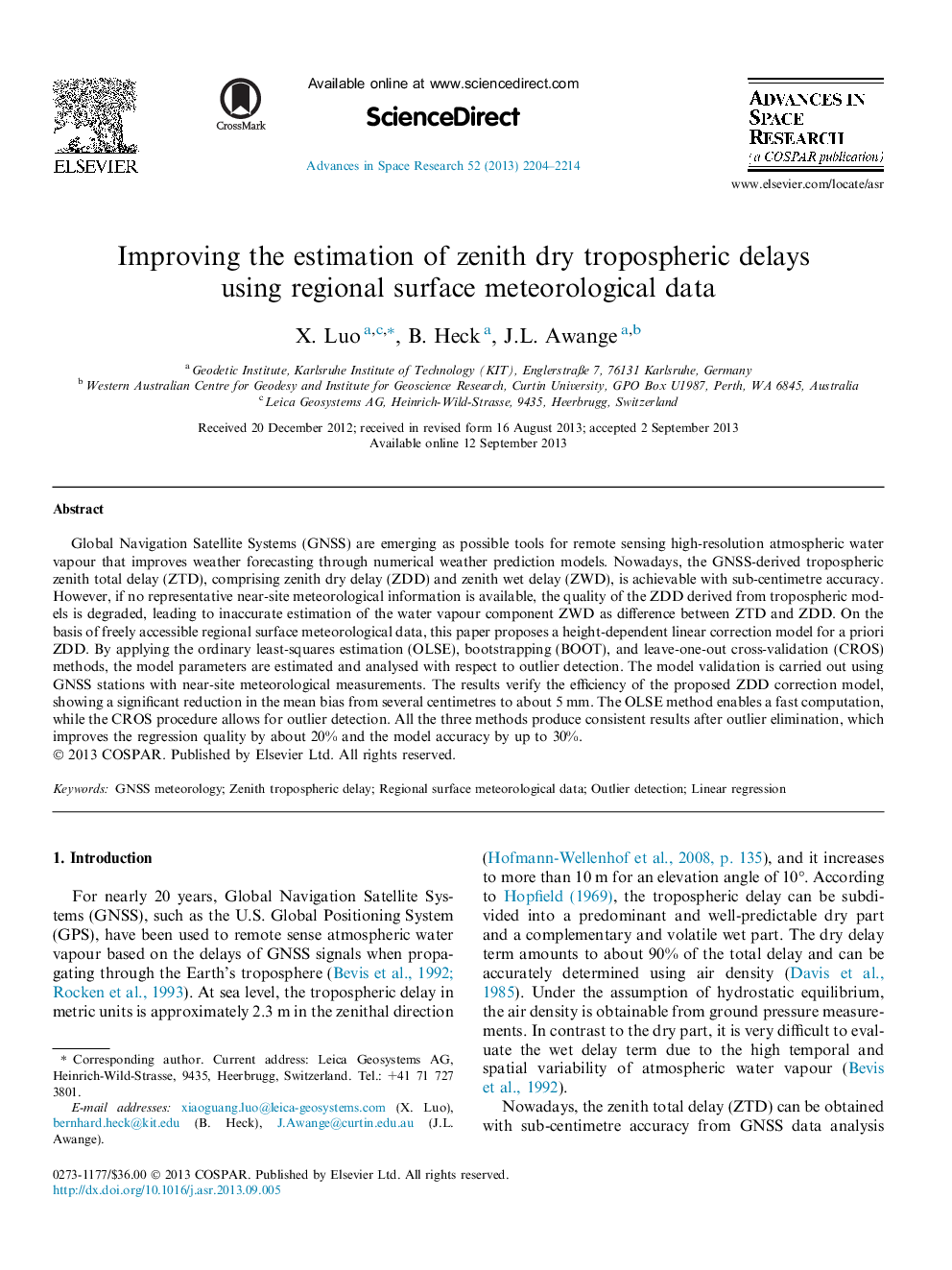| Article ID | Journal | Published Year | Pages | File Type |
|---|---|---|---|---|
| 1765301 | Advances in Space Research | 2013 | 11 Pages |
Abstract
Global Navigation Satellite Systems (GNSS) are emerging as possible tools for remote sensing high-resolution atmospheric water vapour that improves weather forecasting through numerical weather prediction models. Nowadays, the GNSS-derived tropospheric zenith total delay (ZTD), comprising zenith dry delay (ZDD) and zenith wet delay (ZWD), is achievable with sub-centimetre accuracy. However, if no representative near-site meteorological information is available, the quality of the ZDD derived from tropospheric models is degraded, leading to inaccurate estimation of the water vapour component ZWD as difference between ZTD and ZDD. On the basis of freely accessible regional surface meteorological data, this paper proposes a height-dependent linear correction model for a priori ZDD. By applying the ordinary least-squares estimation (OLSE), bootstrapping (BOOT), and leave-one-out cross-validation (CROS) methods, the model parameters are estimated and analysed with respect to outlier detection. The model validation is carried out using GNSS stations with near-site meteorological measurements. The results verify the efficiency of the proposed ZDD correction model, showing a significant reduction in the mean bias from several centimetres to about 5Â mm. The OLSE method enables a fast computation, while the CROS procedure allows for outlier detection. All the three methods produce consistent results after outlier elimination, which improves the regression quality by about 20% and the model accuracy by up to 30%.
Related Topics
Physical Sciences and Engineering
Earth and Planetary Sciences
Space and Planetary Science
Authors
X. Luo, B. Heck, J.L. Awange,
